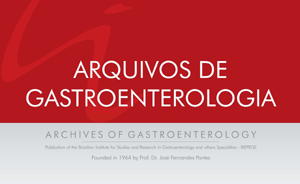Contexto Apesar dos progressos realizados nos últimos anos em métodos de diagnóstico e tratamento cirúrgico do câncer de esôfago, ainda há controvérsias sobre os benefícios reais da quimioradioterapia neoadjuvante.
Objetivo Avaliar o tempo de sobrevida em pacientes operados de carcinoma de células escamosas do esôfago com ou sem quimioradioterapia neoadjuvante.
Método Estudo retrospectivo, não randomizado, realizado com os prontuários dos pacientes submetidos a esofagectomia por carcinoma de células escamosas do esôfago na Faculdade de Ciências Médicas da Universidade de Campinas (UNICAMP), Campinas, São Paulo, Brasil, entre 1979 e 2006. Na análise estatística, o estimador de Kaplan-Meier foi utilizado para calcular as curvas de sobrevivência e do teste log-rank para comparar a sobrevivência em cada grupo. O nível de significância foi estabelecido em 5%.
Resultados O total de 123 pacientes foi avaliado neste estudo, dividido em três grupos: I - 26 (21,2%) pacientes submetidos a esofagectomia, II - 81 (65,8%) pacientes submetidos a radioterapia neoadjuvante seguido de esofagectomia e III - 16 (13%) submetidos a quimioradioterapia neoadjuvante seguido de esofagectomia. Diferença estatisticamente significativa na sobrevida foi registrado entre os grupos (log rank = 6,007, P = 0,05), tendo maior sobrevida o grupo submetido a quimioradioterapia neoadjuvante, seguida pelo grupo submetido a radioterapia neoadjuvante em comparação com o grupo submetido a esofagectomia apenas como o tratamento inicial de escolha.
Conclusão A radioterapia e a quimioterapia neoadjuvantes em pacientes com carcinoma de células escamosas do esôfago oferecem benefícios e aumenta a sobrevida.
Neoplasias esofágicas; Carcinoma de células escamosas; Esofagectomia; Quimioterapia adjuvante; Radioterapia adjuvante

 Radioterapia e quimioterapia neoadjuvantes e cirurgia comparado com a cirurgia no tratamento do carcinoma epidermoide do esôfago
Radioterapia e quimioterapia neoadjuvantes e cirurgia comparado com a cirurgia no tratamento do carcinoma epidermoide do esôfago
